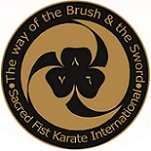|
Most Eskrima systems
include fighting with a variety of weapons, striking with hands and feet
(Suntukan,
Sikaran, tadyakan/tadiyakan), grappling and throwing (Dumog),
biting and whatever skills needed to complete a warrior's training in the
old days of tribal warfare. Perhaps the only major fields that have not been
given as much emphasis as in the past in modern eskrima training today are
skills needed for fighting effectively in groups and hilot - a Filipino
system of first aid, healing, massage, and herbal medicine traditionally
taught alongside eskrima but that has now virtually disappeared.
In most systems, skills with weapons and with empty hands (unarmed) are
developed concurrently using training methods designed to emphasize their
common elements. The most common variations used are single stick (solo
bastón), double stick (double bastón) and sword/stick and dagger (Espada
Y Daga). Some systems are known to specialise in other weapons such as the
whip and staff. |
|
Rattan, an
inexpensive wood from a type of palm in the Philippines, is the most common
material for sticks and staves. Hard and durable, yet light weight, it can
be fire hardened. It shreds under only the worst abuse and will not splinter
like other woods do - thus making it a safe training tool. This aspect also
makes it useful in defending against blades. Kamagong (Ironwood) is also
sometimes used, but generally not for sparring, as it is dense enough to
cause serious injury, although traditionally sparring does not include
weapon to body contact; The participants are skilled enough to
parry/counterstrike, showing respect in not intentionally hitting the
training partner. Eskrima sticks are made in many sizes depending on the
system and the respective ranges being trained. Common lengths range from 6"
(15 cm) to 96" (2.44m), with the most common ranging from 24" (61 cm) to 36"
(91 cm). Eskrima sticks are a reflection of the artist, their system and
methodology. |













